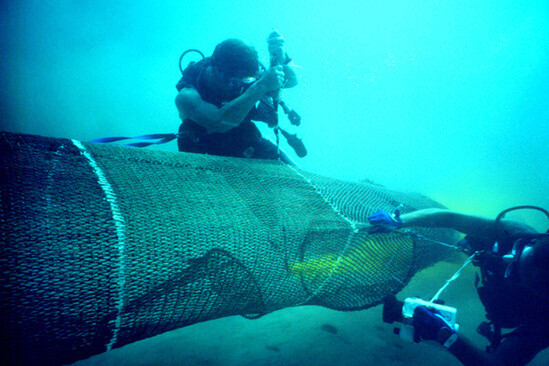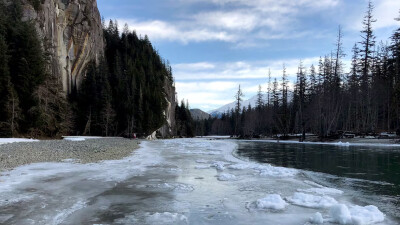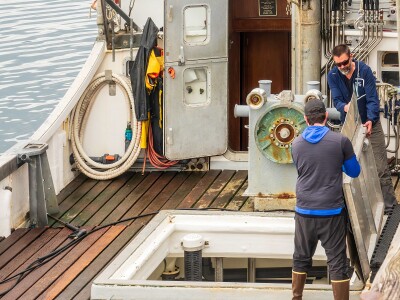Since 1987, NOAA’s Southeast Fisheries Science Center has operated fishery observer programs in the U.S. Gulf to monitor the impacts of fishing activity on finfish stocks and protected species.
What began as an economic evaluation of turtle excluder devices (TED) has evolved into a critical effort to collect biological data and refine gear technology in both shrimp and reef fish fisheries in the Gulf of America (President Donald Trump’s new name for the Gulf of Mexico).
Shrimp fishery
The Shrimp Observer Program focuses on gathering quantitative biological, vessel, and gear selectivity information for the southeastern shrimp fishery. According to NOAA Fisheries, its main goals are to “provide general fishery bycatch characterization and catch rates for finfish species by area and target species,” as well as to “provide catch rates that can be used to estimate protected species bycatch levels.”
Unintended finfish bycatch in shrimp trawls prompted gear developers to evaluate and test more than 150 different bycatch reduction device (BRD) styles. The agency notes that “observer data are used to determine the success of bycatch reduction device designs,” adding that research “evaluates the performance of BRD during commercial shrimping operations.”
Catch rates from nets equipped with BRDs and TEDs are compared with those that include TEDs alone. This research informs the Gulf of America Fishery Management Council’s decision to require observer coverage on federally permitted vessels. Currently, “observer coverage of the entire southeastern shrimp fishery is about 2 percent.”
The shrimp fishery in the Gulf operates year-round, with the highest effort from May through December. Trawlers target brown shrimp off the coasts of Texas and Louisiana, white shrimp in the same areas, pink shrimp off southwestern Florida in the winter months, and rock shrimp off the east coast of Florida.
There are currently 1,467 federally permitted vessels in the Gulf of America, and an additional 535 penaeid and 106 rock shrimp federal permit holders in the South Atlantic.”
Monitoring history
The history of BRD integration and observer involvement dates back to 1992, when a cooperative research plan was launched “to identify, develop, and evaluate gear options to reduce bycatch in the Gulf and South Atlantic shrimp fisheries.” Requirements for BRDs in federal waters were adopted in phases between 1997 and 2004. A mandatory observer program only began in 2007, followed by expansion to the full South Atlantic in 2008.
Reef fish
The Reef Fish Observer Program, which operates in parallel with the shrimp program, was established to help rebuild declining stocks of reef fish. NOAA shared that the goal was “to provide quantitative biological, vessel, and gear selectivity information relative to the directed reef fish fishery.” The program also aims to estimate managed finfish discard and release mortality levels, as well as protected species bycatch levels.
This data helps document catch rates of retained and discarded reef fish species by area, season, and gear type. In the long term, the objective is to rebuild overfished fisheries, maintain productive fisheries, and reduce bycatch.
The reef fishery includes about 890 federally permitted vessels with gear types including bottom longline, vertical line, and, more recently, modified buoy gear. The targeted species are groupers and snappers, with red grouper commonly fished in shallow waters off Florida, while yellowedge groupers, tilefish, and sharks are found in deeper waters.The
Observer involvement in reef fisheries began in 1993 as a voluntary program focused on the fish trap, bottom longline, and bandit reel sectors. In 2006, in collaboration with the Gulf Council and industry, NOAA implemented a mandatory observer program. An individual fishing quota (IFQ) for red snapper was introduced in 2007, followed by IFQs for grouper and tilefish in 2010.
In 2009, an emergency rule was implemented to protect sea turtles by prohibiting the use of bottom longline gear east of Cape San Blas, Florida, from June to August. This also included limited gear, allowing only 1,000 hooks onboard, of which only 750 could be rigged for fishing.
The shrimp and reef fish observer programs form a backbone of NOAA’s efforts to push for sustainable fishing in the Gulf. Through continued collaboration among regulators, researchers, and fishermen, observer data will remain a vital tool in rebuilding fish stocks and safeguarding the future of commercial fisheries in this region.







